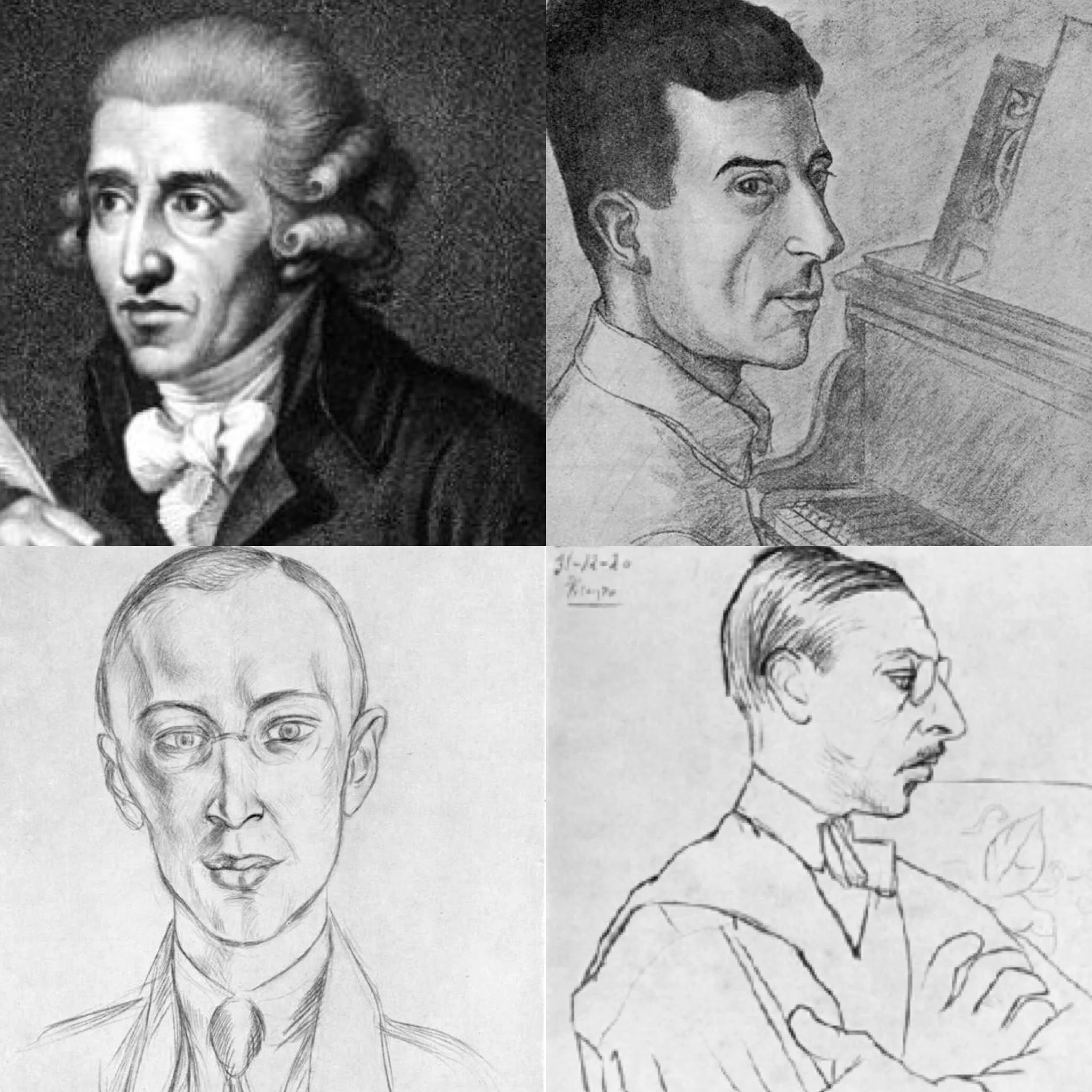REVIEW: The Orchestra Now Slays a Monster
DECEMBER 14, 2018
BY BRIAN TAYLOR
"Movie music without the movie" is how Emmanuel Koh, a violist in The Orchestra Now (TŌN), described Reinhold Glière's Symphony No. 3, "Ilya Muromets," Op. 42. This international ensemble of distinguished Master's degree students in residence at Bard College tackled the giant symphony in a concert Friday night at Carnegie Hall entitled "Russian Evolution: From Rimsky-Korsakov to Glière," and emerged victorious.
Leon Botstein conducting the Orchestra Now. Photo: David DeNee
Top: 1914 painting of Ilya Muromets by Viktor Vasnetsov
Glière was a famous Russian composer and teacher to a young Sergei Prokofiev, among others. His massive Third Symphony is a programmatic work comprised of four substantial tableaux for large orchestra with some very exacting musical demands. Lasting well more than 70 minutes, and calling for enormous forces (three bassoons plus contrabassoon, eight horns, two harps, etc.), the piece provided a healthy opportunity for the young musicians of TŌN to dig their teeth into a work of Bruckner-like proportions, and they clearly enjoyed indulging in this musically extravagant undertaking.
Ilya Muromets is a mythological folk hero (based on a real figure who lived in the late twelfth century) of renewed relevance in Glière's time, as Koh explained in his introductory remarks, "because he was a symbol of Russia's might." Glière's monumental symphonic tribute depicts the mythic adventures of this famous icon. Maestro Leon Botstein led a painstakingly accurate reading of score, the opening Andante Sostenuto unfolding with glacial pace. Playing with careful attention to detail, each phrase adherent to the composer's expression marks, it's obvious this is a well-rehearsed group.
The first movement requires the orchestra to do just about everything in its somber 122 pages of score depicting our protagonist's origin story: a cripple until he was healed by wandering pilgrims, eventually acquiring super powers (apparently, he's depicted in Russian popular culture as a sort of He-Man archetype). As the first movement builds to heraldic heights from its foreboding beginning, and at the symphony's conclusion, too, the orchestra's brass section was at times challenged by intonation. But they turned in some impressive virtuosity, too. The horns are called upon to do athletic things, and they, in particular, played with rhythmic verve in their many wide leaping outcries.
The Orchestra Now at Carnegie Hall. Photo: David DeNee
The second movement "Solovey the Brigand" finds our hero confronting a threatening monster dwelling in a creepy forest. The movement opens with the strings, tremolo, sul ponticello, sounding like a biting wind. In an inspired bit of orchestration, to depict the monster Solovey, Glière writes a creepy Jabba-the-Hut kind of melody. Scored for bassoon and contrabassoon in unison, it’s deliciously lugubrious. This movement also takes a long time to unfold, Glière suspending any resolution for what seems like an eternity, seemingly stuck in ambiguous, French-sounding harmonies like quicksand. The tone painting also includes lots of nature-inspired effects in the high woodwinds, chirping birdsong, and TŌN's woodwind section excelled.
The third movement, a blessedly brief "At the Court of Vladimir, the Mighty Sun," has a lighter mood and texture as it begins. The celesta is used to delightful effect, and well-played by Sindy Yang. The bassoon monster makes a reappearance here, dramatically dispatched by Ilya in a turn of events represented by music that might have substituted nicely for a heroic scene in the movie of Superman. The fourth movement, a battle scene, continues apace, requiring virtuosic playing from each section of the orchestra, and building to a hard-earned zenith.
The ghost of Tchaikovsky is certainly present (if his gift for melody, alas, is not) and also hanging in the room is the presence of later composers like Prokofiev and Shostakovich, who undoubtedly were heavily influenced by Glière's brand of Russian musical expression. The concert opened with Nikolai Rimsky-Korsakov's Symphony No. 1, a relatively early work, composed when he was a naval officer, and still learning his craft.
A friend of mine once proposed the concept of a "Last Performance Society" (in counterpoint to, say, groups dedicated to performing New Music), where pieces deemed ready for permanent retirement would be given one final performance, after which all remaining copies would be ceremoniously incinerated. I would like to toss Rimsky-Korsakov's First Symphony in the hat for consideration. It's apparently regarded as the "first Russian symphony," celebrated for eschewing any remnants of "German-ness.” But, this evening's program was exceedingly somber, and I wonder if a better balance could have been achieved.
This is no reflection on TŌN's studious, eager performance. They are certainly ready for Mahler, Wagner, and more. Yet, the professional orchestras for which these talented players are destined are probably not programming Glière's Third. So, it's a win-win.
The Orchestra Now at Carnegie Hall. Photo: David DeNee
Upcoming:
Thursday December 20, 2018, 7:30 PM
Olin Hall at Bard College (Annandale-on-Hudson, NY)
and
Friday December 21, 2018, 7PM
Hudson Hall (Hudson, NY)








